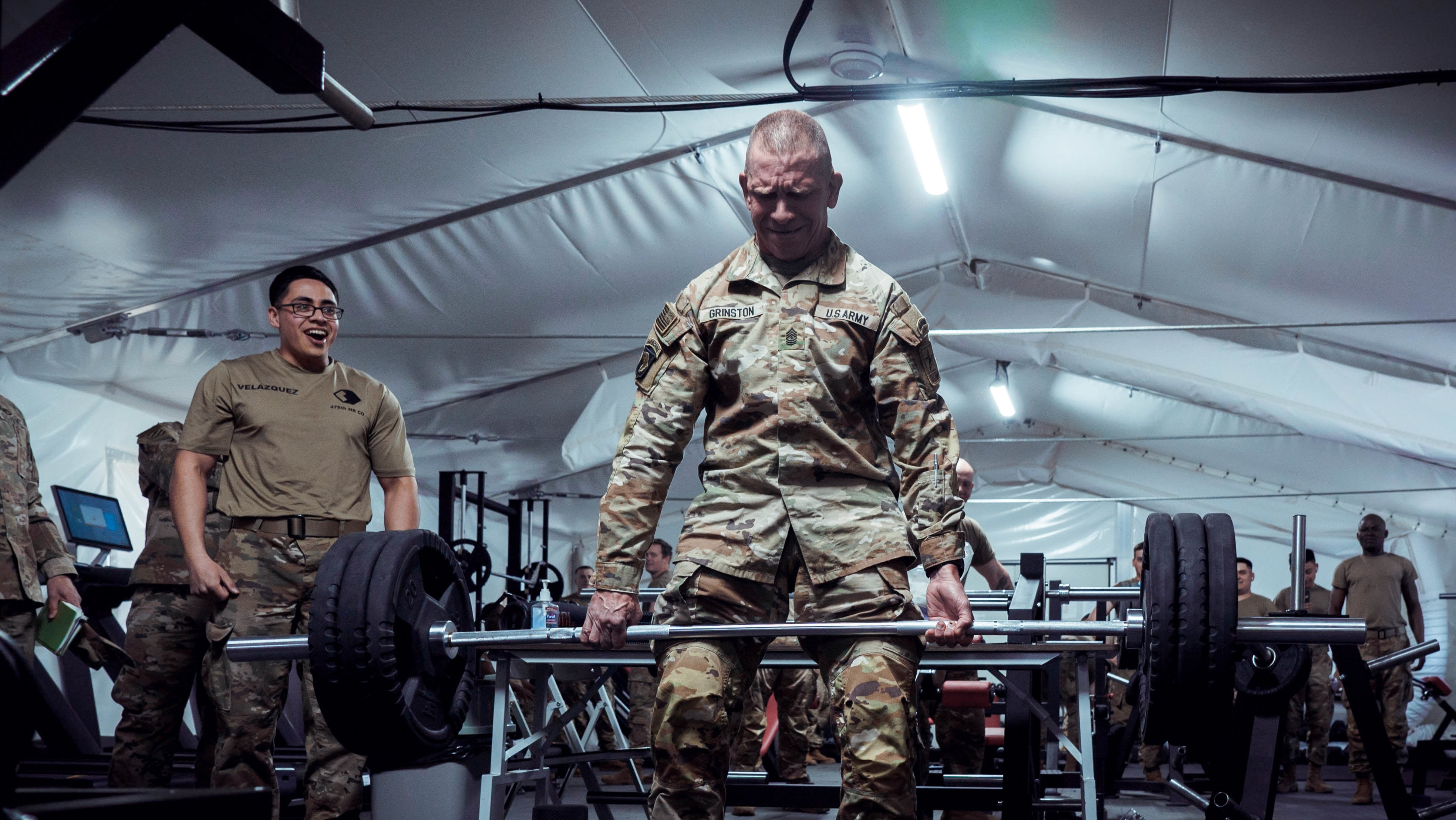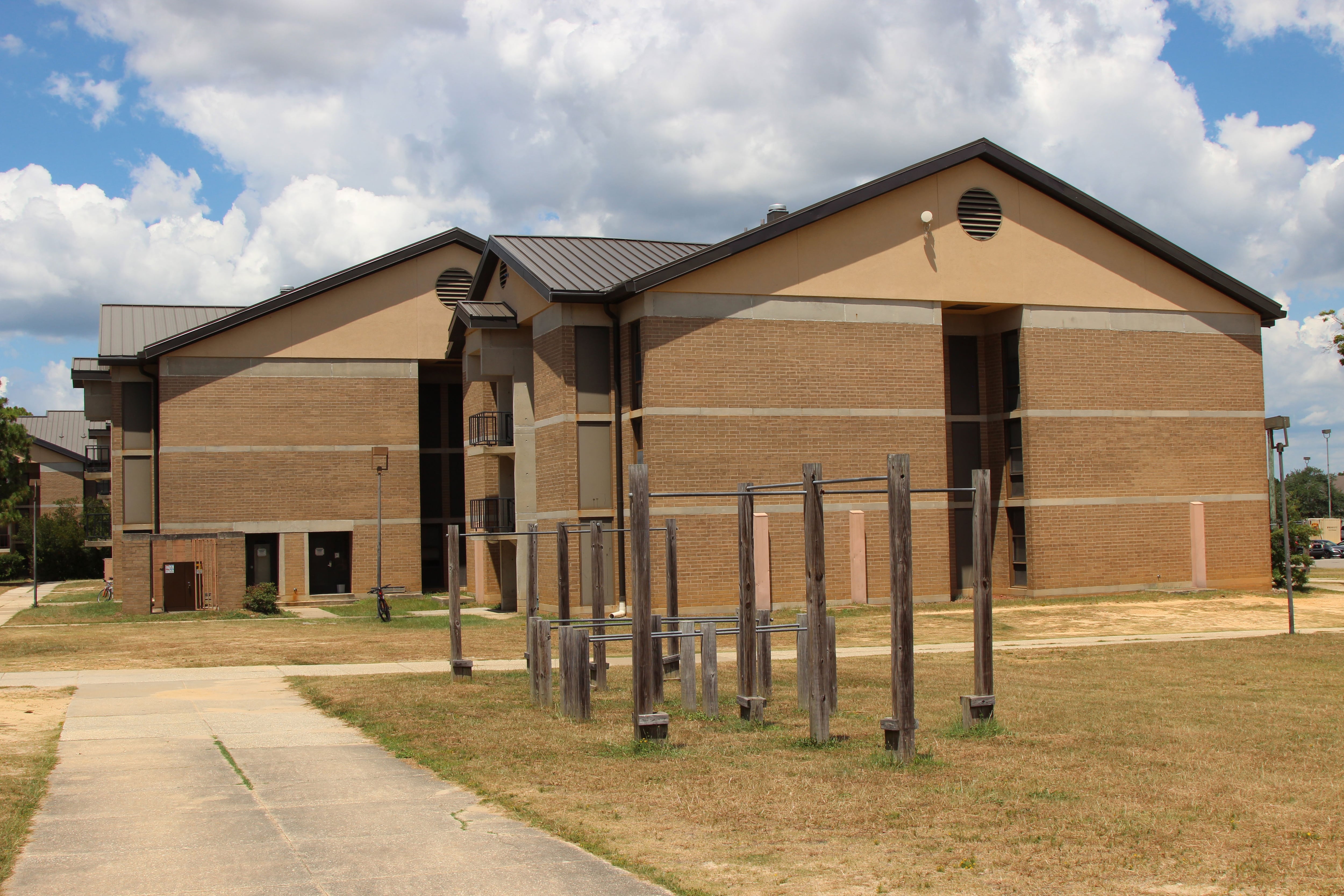After a process that took almost two months longer than officials initially anticipated, all soldiers have been moved out of the Smoke Bomb Hill barracks at Fort Bragg, North Carolina, according to a Friday statement from the 18th Airborne Corps.
Nearly 1,200 soldiers on the base have been relocated either to other barracks or off-post into community residential housing, according to the statement. Army leaders decided that “the 50-year old barracks passed the point of economic diminishing return,” the statement reads.
The large-scale exodus came after Army and installation leaders, including Sgt. Maj. of the Army Michael Grinston, inspected the Smoke Bomb Hill barracks this summer.
The inspection found “higher than normal moisture levels” — conditions ripe for mold — “and quality of life concerns,” a spokesperson for Fort Bragg said in an unsigned email statement to Army Times.
Army spokespeople said in early August that all affected soldiers would be moved over the course of 30 days, but the process trickled on much longer than expected.
RELATED

“It was not easy, but we wanted to ensure we did this right in order to best take care of our Soldiers,” Maj. Gen. Brian Mennes, the 18th Airborne Corps and Fort Bragg deputy commander, said in a statement. “We understood that all residential moves are significant to the soldier so our guiding principle was to take care of our people throughout this process and not cause undue hardship due to the move.”
Smoke Bomb Hill barracks were constructed in the 1970s through Project Volunteer Army, meant to give the newly all-volunteer service better living conditions in the post-Vietnam War years.
Barracks issues have cropped up at other Army bases in recent weeks, too.
Last month, leaders at Fort Stewart and Hunter Army Airfield in Georgia said that they planned to increase barrack inspections, looking for mold in particular. This came after videos were posted to social media showing walls covered in mold at barracks on the installation.
The Army also recently issued an order to inspect all of its facilities across the force for mold, USA Today first reported Oct. 12.
The Army headquarters at the Pentagon distributed a memo requiring leaders to inspect all barracks, family housing and offices for active duty soldiers by Nov. 18 for “unhealthy, unsafe, substandard living conditions,” USA Today reported.
In an interview with Army Times in early October, Grinston noted the funding challenges the Army faces when trying to address sub-par barracks.
“It is incredibly challenging to forecast barracks projects over the next five years when you don’t know how much money you will have,” Grinston said. “There are a lot of requirements in the Army and the funding isn’t unlimited. Having the predictability to know what we can and can’t do is really important. Time is another factor. When you look at something like Smoke Bomb Hill, it will be a couple of years before new barracks are constructed.”
Grinston pointed to Fort Hood, where he said the Army has spent $557 million on 38 barracks since 2017. More money at more installations is expected in the coming years.
“We are working very hard on this and we’ll average over a billion (dollars) a year through 2030 to build, renovate and sustain our barracks,” Grinston added.
Zamone “Z” Perez is a reporter at Military Times. He previously worked at Foreign Policy and Ufahamu Africa. He is a graduate of Northwestern University, where he researched international ethics and atrocity prevention in his thesis. He can be found on Twitter @zamoneperez.





